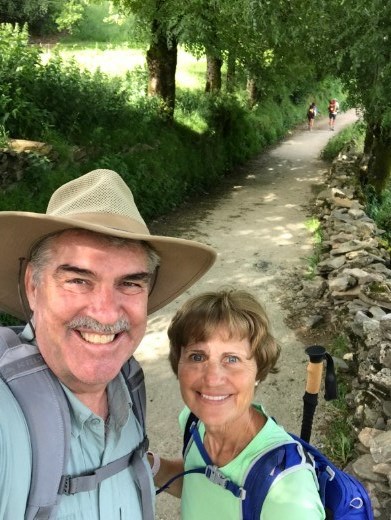We "leave" O Cebreiro in the dark, but look an open cafe! It's still a bit dark, so for safety's sake it's best we stop for coffee and toast. Safety first!
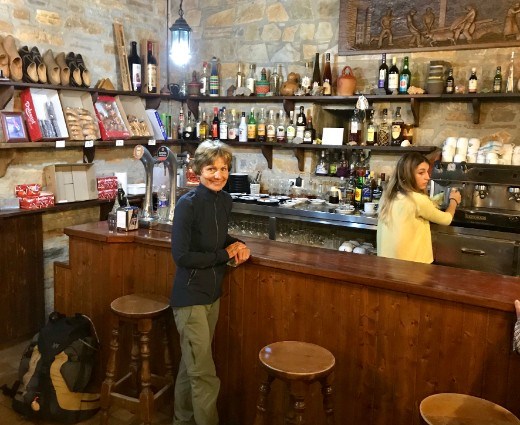
Jeff ran out screaming when he saw the local boar's head. I caught up with him at this marker just up the trail.
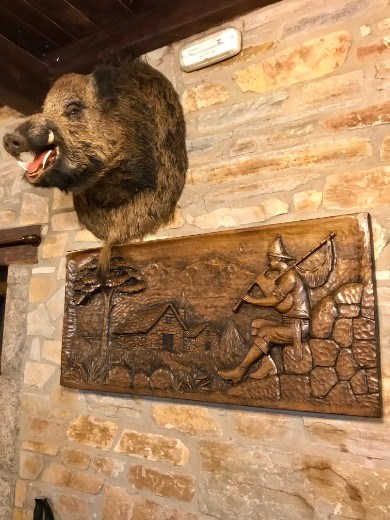
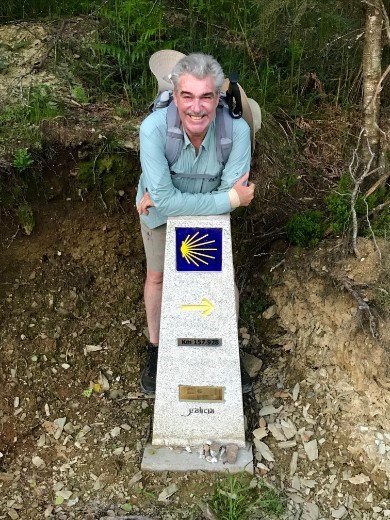
The valley of Linares looking down from O Cebeiro. Jeff passes the church near the bottom of the hill about 4 miles out of O Cebeiro. This is where, in 2016, two lost pilgrms rejoined the Camino trail... Started in the dark that year too and missed the trail marker. See... safety first! Haha.
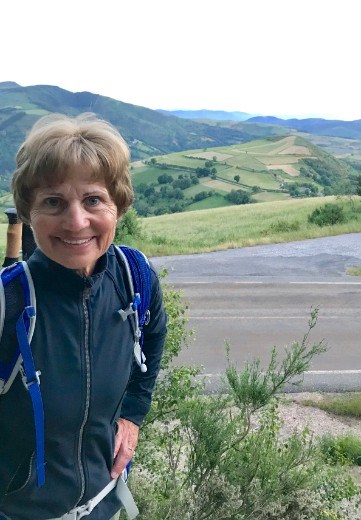
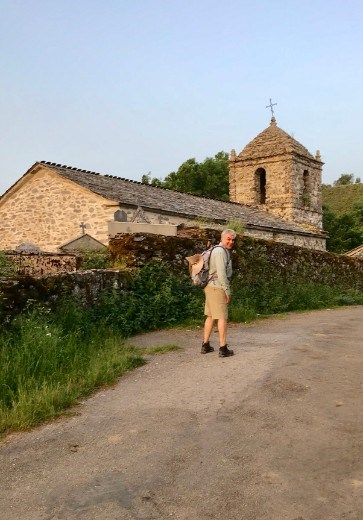
Because we didn't climb enough yesterday...we hiked to the Alto de San Roque today where this windswept pilgrim stands about 12 feet tall (Or as Jeff is saying about 2.5 Simons.) After a brief walk along the top we begin to descend into Hospital de la Condesa. The remains of this church sit adjacent to the Camino trail in Hospital.
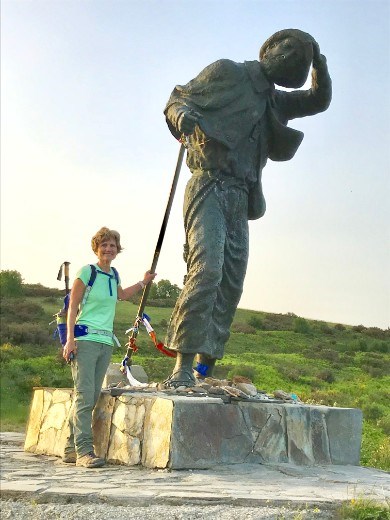
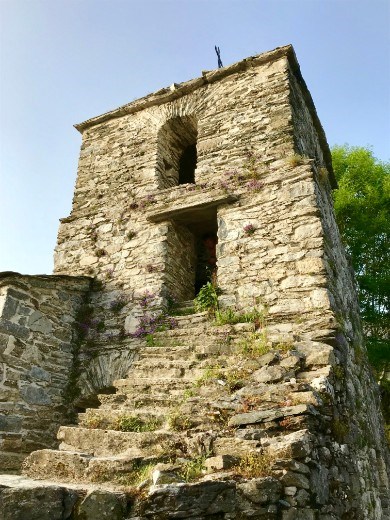
Couldn't resist taking this photo of a farmer raking his grass hay. The rakes are so different now--horizontal rather than vertical, but they do a very neat job of creating rows for the massive round baler that will be along soon after. We saw lots of giant round bales wrapped in plastic to keep the hay dry.
We met Mary from Hamburg, Germany at a coffee shop in Fronfria. She's hiking on her own and says, "Some people just talk too much on the trail." She put her index finger to her lips and said, "You just want to say SHHHHH! " Cracked us up, she's saying what many are thinking!
According to Dintaman and Landes (2017) Fronfria was the site for the hospice of Santa Catalina, built in 1535, where lodging for pilgrims included salt, water, heat and two blankets. Sick pilgrims got all that plus an extra piece of bread, butter and eggs.
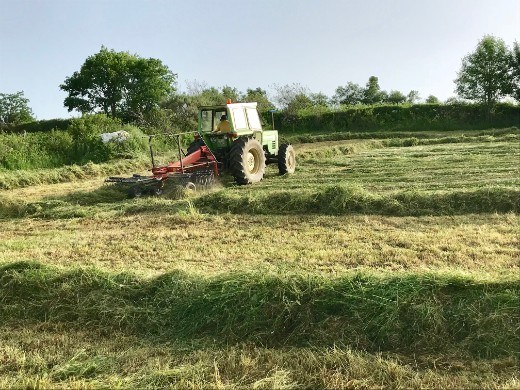
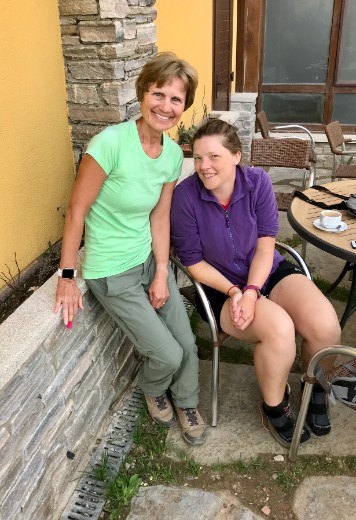
Jeff running with the bulls in Fronfria. Shhh... don't tell him they're actually cows. He's strutting around all manly! These two mounted officers of the Guardia Civil met us as we were descending another hill near Triacastela. The first policia salutes Jeff below as he passes by us.
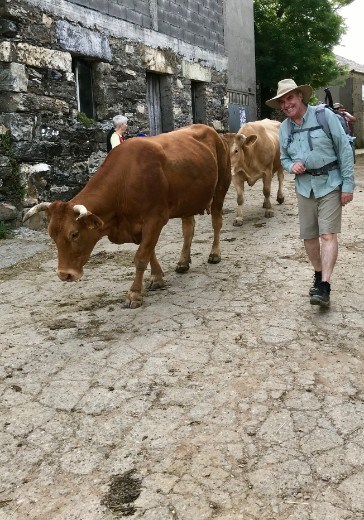
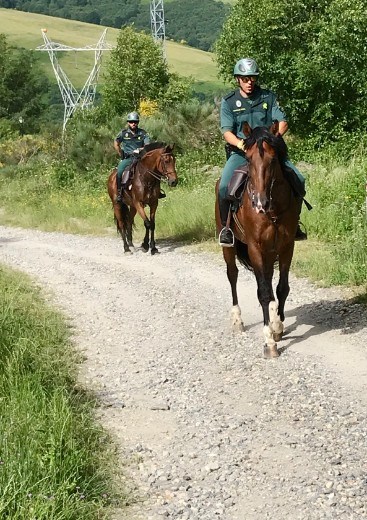

We met this three-generation Spanish family hiking the Camino just outside Triacastela. Wow.

800-year old tree near Triacastela.
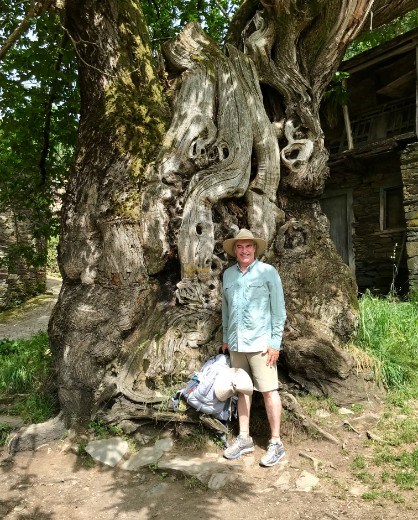
What's a visit to Triacastela without a stop at Casa Simon?!
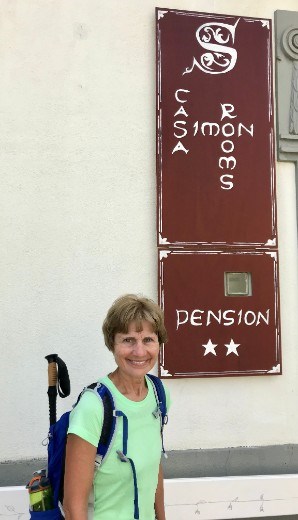
Triacastela, with a current population of 772, was established in the 9th century and three castles (thus the name Triacastela) were bulit and destroyed there in the 10th century. Some busy folks! Limestone is plentiful in Triacastela and early pilgrims would carry a big stone 100 km to the limekiln near Santiago where it would be added to the construction materials for the cathedral there (Dintaman & Landes, 2017).
